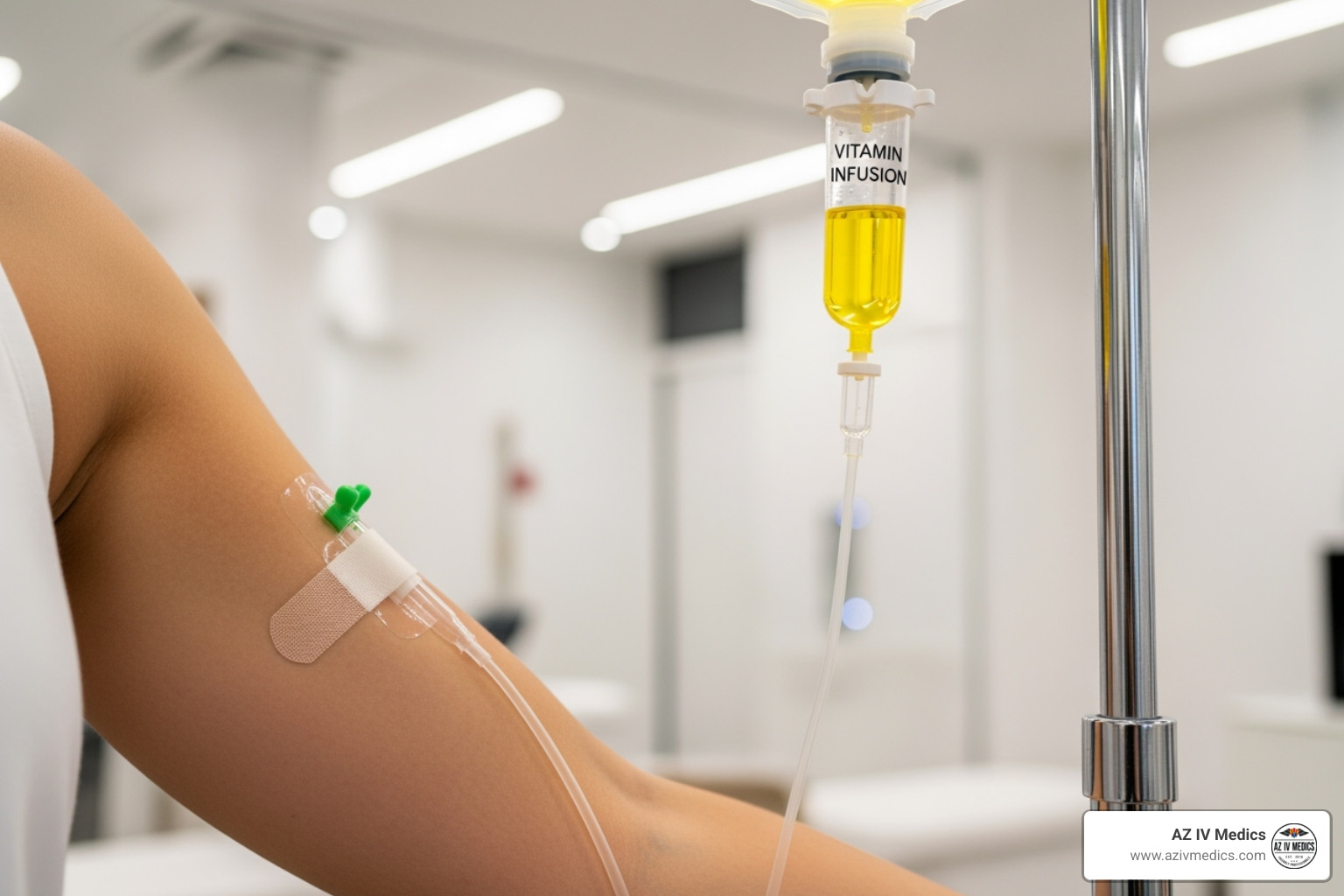Altitude Sickness IV Therapy: Fast Relief for Hikers in Arizona
Joseph Lopez • April 25, 2024

Arizona is more than just the stunning Grand Canyon; it's also filled with fantastic hiking spots like Humphreys Peak, Agassiz Peak, the striking red cliffs of Sedona, and the rugged trails of Camelback Mountain.
While these places offer endless gorgeous views, altitude sickness can sometimes spoil the fun, making hikers feel nauseous and breathless, and less able to enjoy the beauty around them. Fortunately, quick and effective relief is at hand with mobile IV drip therapy, which can help alleviate these symptoms swiftly and get you back to enjoying your adventure.
What is Altitude Sickness?
Altitude sickness, also known as acute mountain sickness (AMS), happens when you climb to high elevations too quickly and your body doesn't have enough time to adapt to the lower oxygen levels and reduced air pressure. This condition can cause symptoms ranging from mild discomfort to severe health risks.
Symptoms of altitude sickness include:
- Dizziness
- Nausea and vomiting
- Headaches
- Fatigue and weakness
- Loss of appetite
- Insomnia
- Poor coordination
For those suffering from severe altitude sickness, two serious conditions to watch out for are high altitude pulmonary edema (HAPE) and high altitude cerebral edema (HACE). These can often occur together.
- HAPE is extremely dangerous because it involves fluid building up in the lungs, which can be life-threatening without quick treatment.
HACE involves swelling in the brain caused by the same fluid build-up, which is also critical and requires immediate medical attention.
Symptoms of advanced altitude sickness include:
- Difficulty breathing, even at rest
- A persistent cough, which may produce frothy or blood-tinged sputum
- Cyanosis, where the skin or nails turn blue due to oxygen deprivation
- Rapid heart rate
- Confusion or irrational behavior
- Challenges with physical coordination, such as being unable to walk in a straight line or sit upright.
These symptoms require immediate medical attention to prevent life-threatening complications.
How Can IV Therapy Help Treat Altitude Sickness?
IV therapy is a quick and efficient way to tackle the discomforts of altitude sickness. This method directly delivers essential fluids, vitamins, and minerals straight into your bloodstream, avoiding the slow digestion process that comes with taking pills or drinking fluids. This direct approach means you can feel better much faster, often within half an hour, which is perfect for hikers and travelers who are eager to get back on their feet.
At higher elevations, simple activities can suddenly feel daunting due to thinner air. While resting, staying hydrated, and taking oral medications like ibuprofen for headaches or nausea pills can provide some relief, these methods can be slow because they need to be digested first. You will start feeling relief from headaches, nausea, and fatigue incredibly quickly.
AZ IV Medics recommends a specific IV treatment for altitude sickness called the Myers’ Cocktail. This formula is packed with B Complex vitamins, vitamin B12, vitamin C, magnesium, zinc, and the antioxidant glutathione, all known for their ability to boost energy and reduce tiredness.
If you're also struggling with nausea, adding an anti-nausea medication like Zofran to your IV can focus on easing that discomfort, allowing you to adapt more comfortably to the high altitude. To further address symptoms such as headache, our healthcare professionals can include a pain reliever like Toradol in your IV treatment, enhancing its effectiveness in reducing altitude sickness symptoms and helping you feel like yourself again.
How to Prevent Altitude Sickness: Tips Before You Hit the Trails
Prevention is always better than cure, especially when it comes to altitude sickness. Here are some strategies to help prevent altitude sickness:
- Acclimate Gradually: If traveling to high altitudes, spend a few days at a moderately high altitude to allow your body to adjust before ascending further.
- Stay Hydrated: Dehydration exacerbates altitude sickness. Drink plenty of water before and during your hike.
- Avoid Alcohol and Sedatives: These can reduce your respiratory drive, especially during sleep, worsening symptoms.
- Eat Carbohydrates: Foods high in carbs can improve your body's ability to use oxygen and reduce symptoms.
- Consider IV Therapy: Using IV therapy before your hike can boost your hydration and nutrient levels, giving your body extra support to handle the altitude change.
FAQ
How does hydration prevent altitude sickness?
Hydrating effectively enhances the ability of red blood cells to pick up oxygen in the lungs, which is essential for breathing. Most people find themselves short of breath at high altitudes well before feeling any physical fatigue in their legs.
Will an IV help with altitude sickness?
Yes, an IV can help with altitude sickness by quickly restoring hydration and providing essential nutrients and medications directly into your bloodstream.
Do electrolytes help prevent altitude sickness?
Yes, electrolytes help prevent altitude sickness by maintaining proper hydration and supporting cellular functions in the body as it adjusts to higher altitudes.
What is the best treatment for altitude sickness?
The best treatment for altitude sickness is to ascend slowly, hydrate adequately, and use medications such as acetazolamide, along with IV therapy for severe symptoms.
Altitude Sickness IV Therapy Options in Arizona
For those in Arizona, particularly areas like Phoenix, Tucson, and other high-altitude regions, mobile IV services offer convenient and effective relief. These services bring IV treatment directly to your home, AirBnB, hotel, or even trailside, providing a blend of fluids, electrolytes, vitamins, and medications tailored to combat the symptoms of altitude sickness. Treatments such as the Myers' Cocktail, which includes a mix of B vitamins, vitamin C, and other nutrients, are particularly popular for their efficacy in boosting energy and alleviating symptoms.
When to Seek IV Therapy for Altitude Sickness
If you start experiencing the symptoms of altitude sickness and conventional methods such as hydration and rest do not alleviate them, IV therapy may be the right choice. This therapy is particularly recommended for those who have symptoms that hinder their ability to hike or enjoy outdoor activities, providing a boost to get back on the trail faster and more comfortably.
Contact Us for Altitude Sickness Relief
If altitude sickness is keeping you from enjoying the beautiful heights of Arizona, don’t hesitate to reach out to AZ IV Medics at (623) 521-5034 for fast and effective treatment. Whether you are in Phoenix, Flagstaff, Sedona, or Tucson, our professional team is ready to help you recover and return to your adventures with minimal downtime. Our treatments are safe, effective, and administered by experienced medical professionals, ensuring you receive the best care possible right where you need it.




